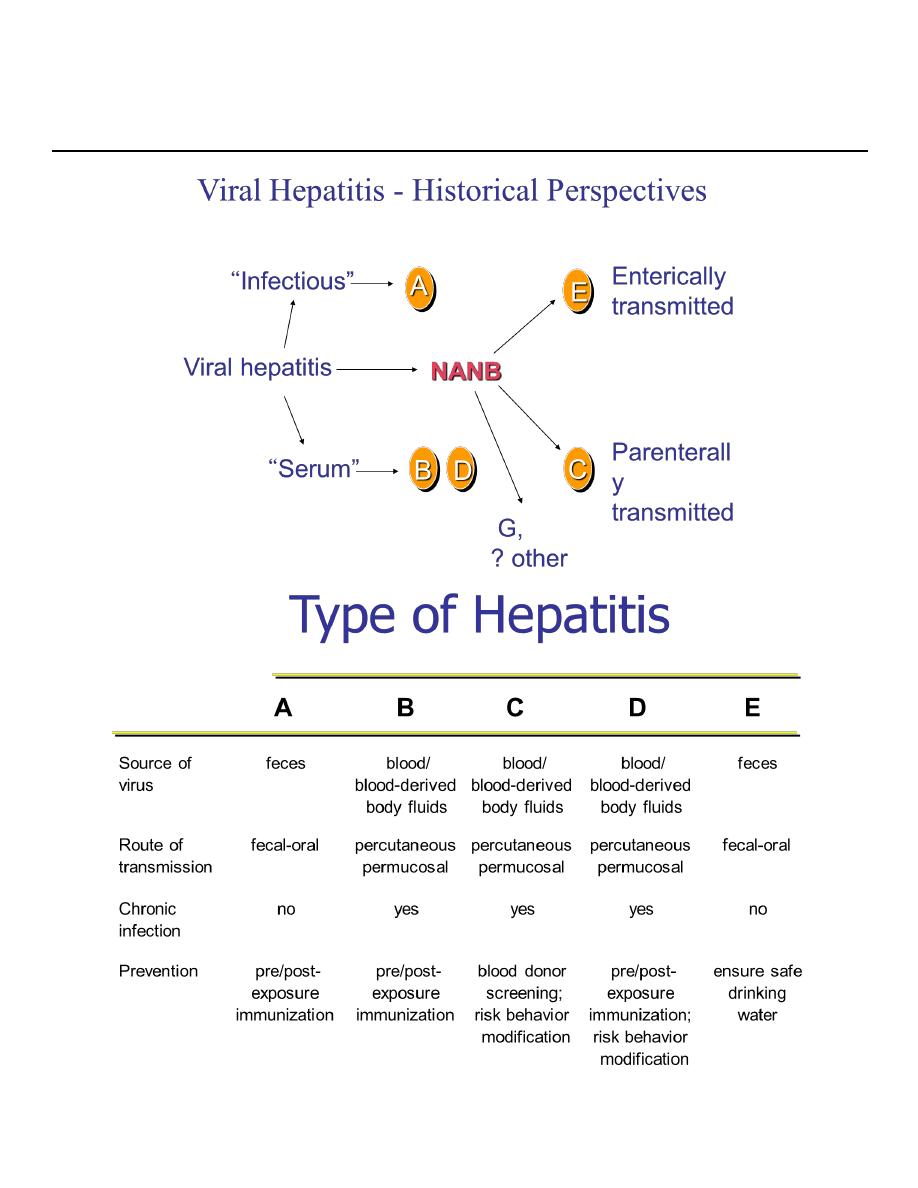
1
Hepatitis A-E Viruses
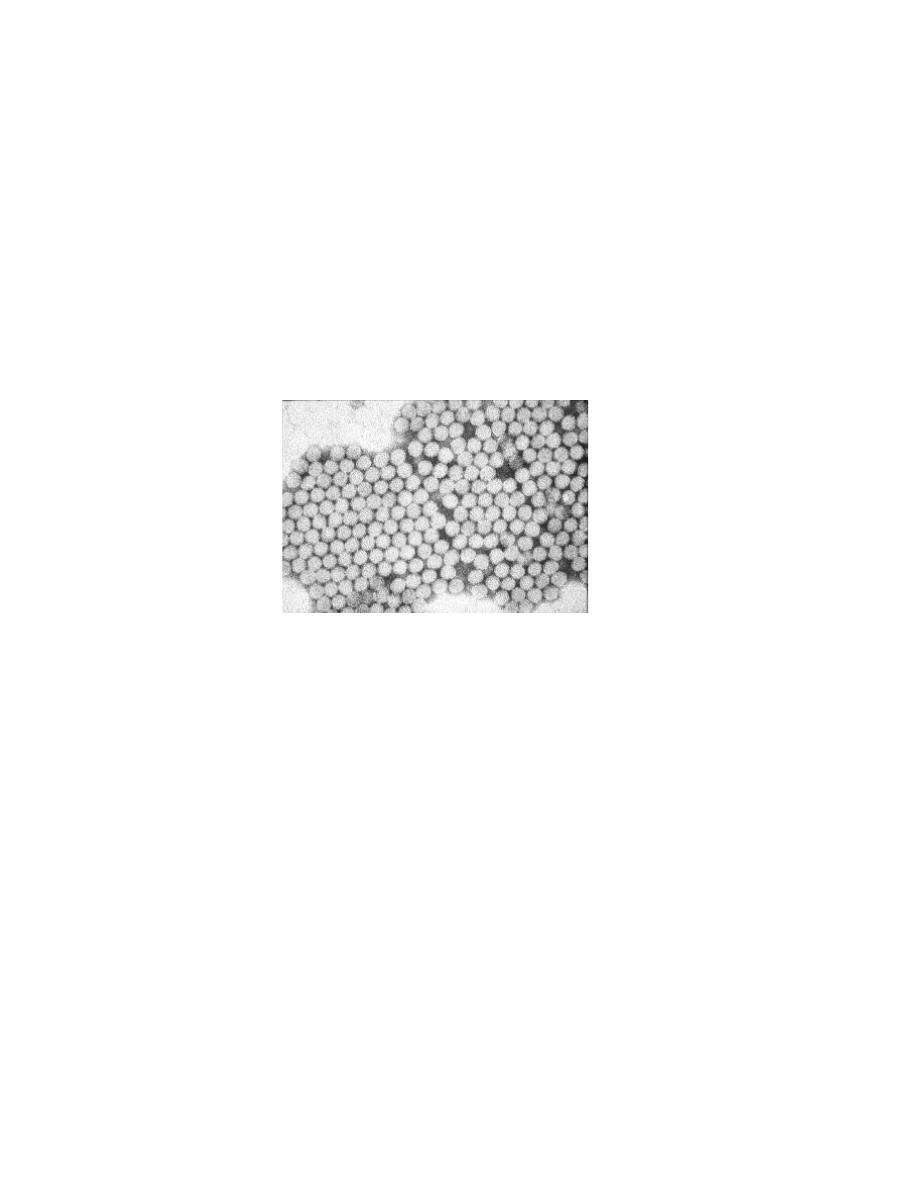
2
Hepatitis A Virus
Naked RNA virus
Related to enteroviruses, formerly known as enterovirus 72, now put in its
own family: heptovirus
One stable serotype only
Difficult to grow in cell culture and also in vivo in chimpanzees.
4 genotypes exist, but in practice most of them are group 1
Clinical Features
Incubation period:
Average 30 days
Range 15-50 days
Jaundice by
<6 yrs, <10%
age group:
6-14 yrs, 40%-50%
>14 yrs, 70%-80%
Complications:
Fulminant hepatitis
Cholestatic hepatitis
Relapsing hepatitis
Chronic sequelae:
None
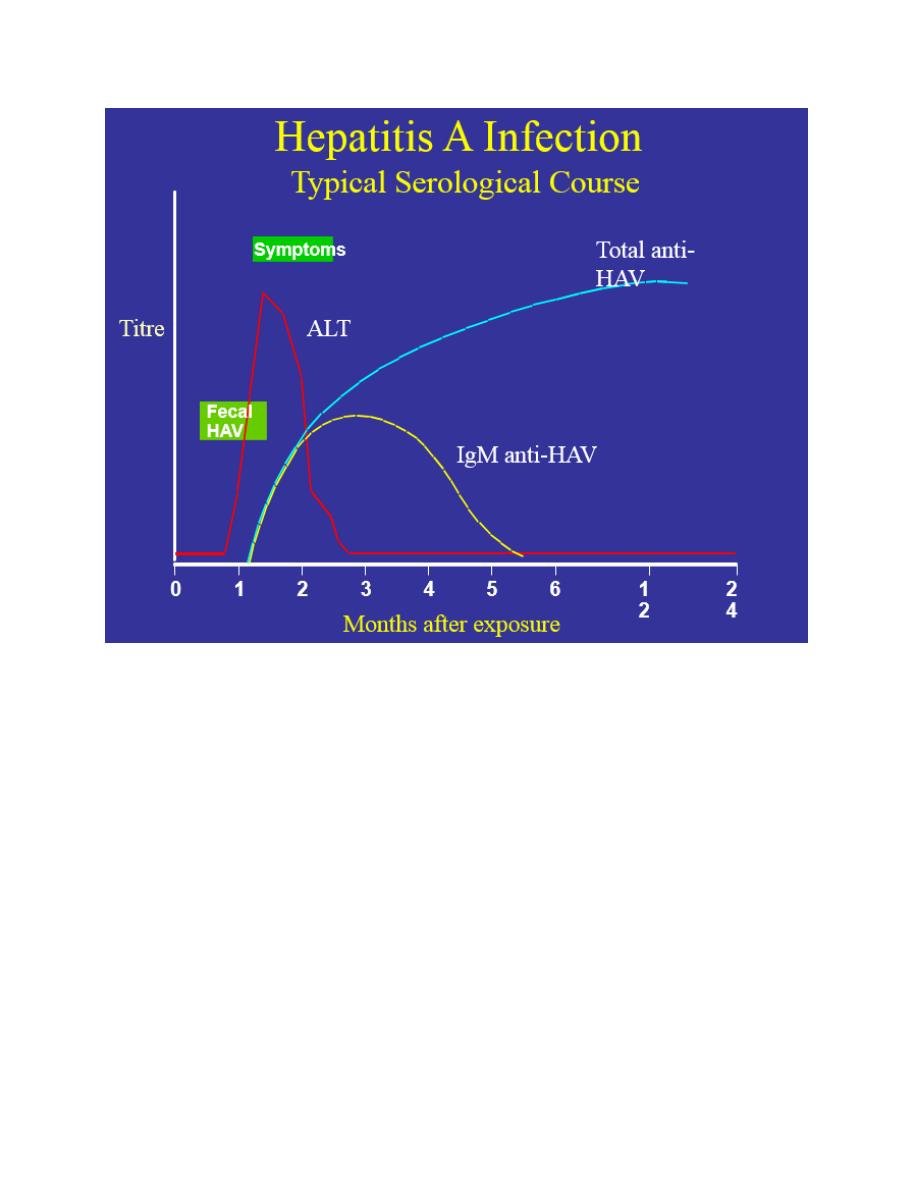
3
Hepatitis A Virus Transmission
Close personal contact
(e.g., household contact, child day care centers)
Contaminated food, water
(e.g., infected food handlers)
Laboratory Diagnosis
Acute infection is diagnosed by the detection of HAV-IgM in serum by
EIA.
Past Infection i.e. immunity is determined by the detection of HAV-IgG
by EIA.
Cell culture – difficult and take up to 4 weeks, not routinely performed
Direct Detection – EM, RT-PCR of faeces. Can detect illness earlier than
serology but rarely performed.

4
Hepatitis A Vaccination Strategies ( Epidemiologic Considerations )
Many cases occur in community-wide outbreaks
o no risk factor identified for most cases
o highest attack rates in 5-14 year olds
o children serve as reservoir of infection
Persons at increased risk of infection
o Travelers
Hepatitis A Prevention - Immune Globulin
Pre-exposure
o travelers to intermediate and high
HAV-endemic regions
Post-exposure (within 14 days)
Routine
o household and other intimate contacts
Selected situations
o institutions (e.g., day care centers)
o common source exposure (e.g., food prepared by infected food
handler)
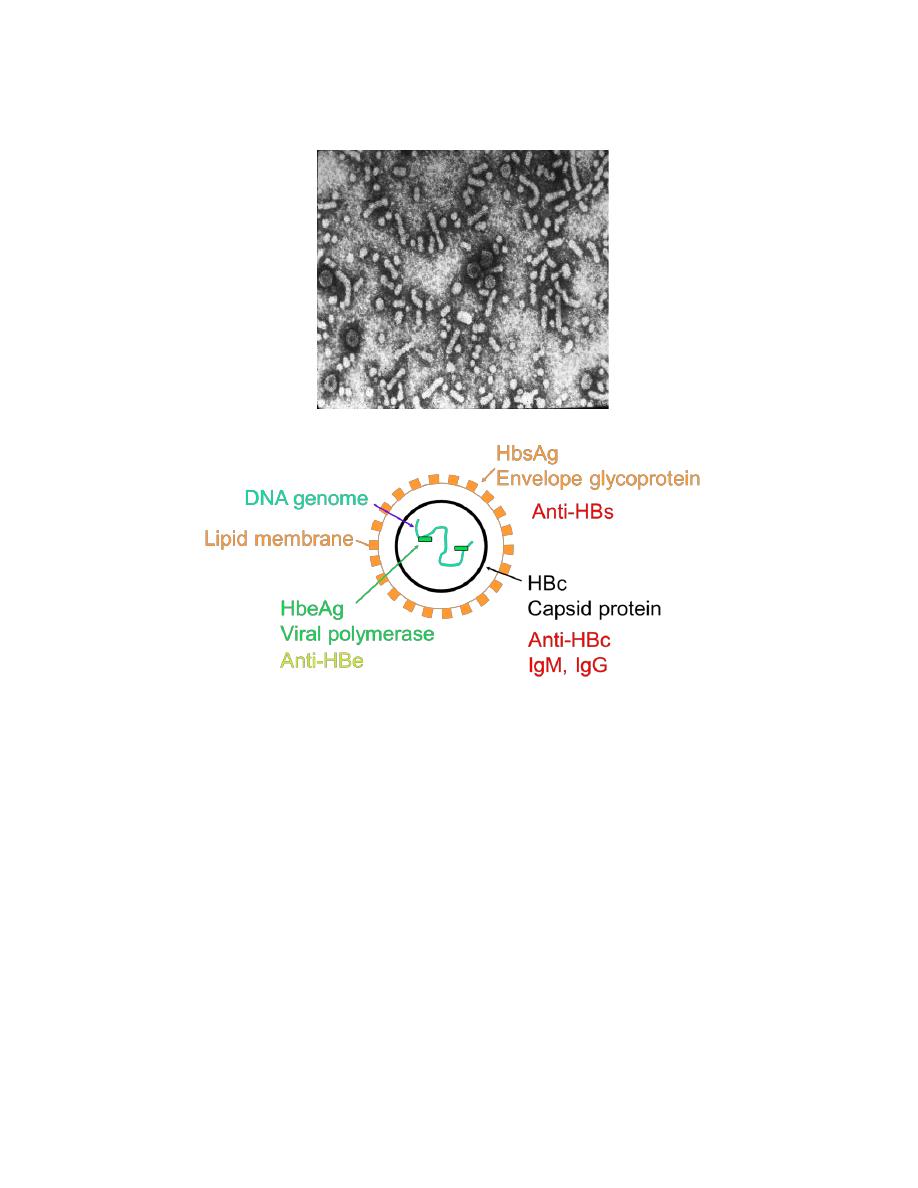
5
Hepatitis B Virus
Double stranded DNA virus,the + strand not complete
Complete Dane particle 42 nm, 28 nm electron dense core, containing
HBcAg and HBeAg.
The coat and the 22 nm free particles contain HBsAg
At least 4 phenotypes of HBsAg are recognized;
adw, adr, ayw and ayr.
The HBcAg is of a single serotype.
It has not yet been possible to propagate the virus
in cell culture.
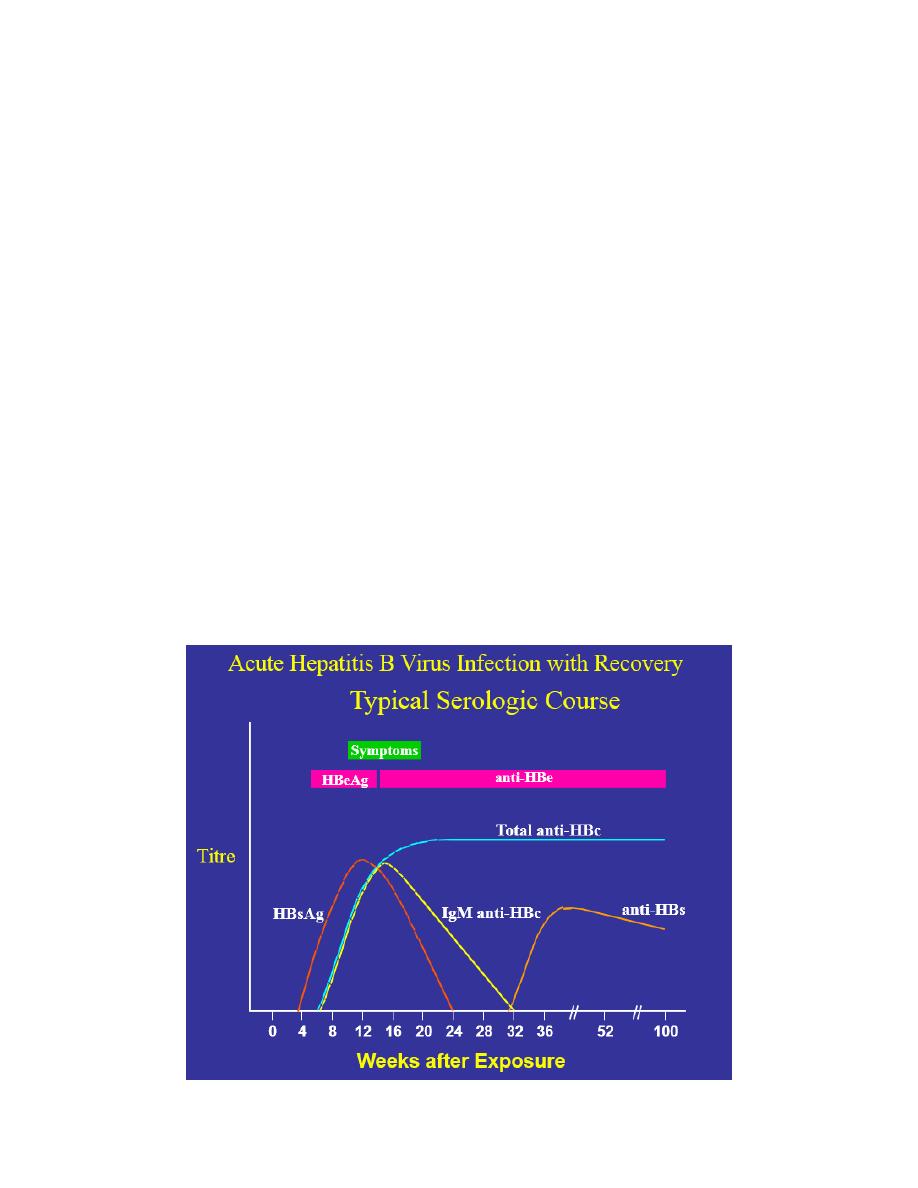
6
Clinical Features
Incubation period:
Average 60-90 days
Clinical illness (jaundice):
<5 yrs, <10%
5 yrs, 30%-50%
Acute case-fatality rate:
0.5%-1%
Chronic infection:
<5 yrs, 30%-90%
5 yrs, 2%-10%
Mortality from
chronic liver disease:
15%-25%
Spectrum of Chronic Hepatitis B Diseases
1. Chronic Persistent Hepatitis - asymptomatic
2. Chronic Active Hepatitis - symptomatic exacerbations of hepatitis
3. Cirrhosis of Liver
4. Hepatocellular Carcinoma
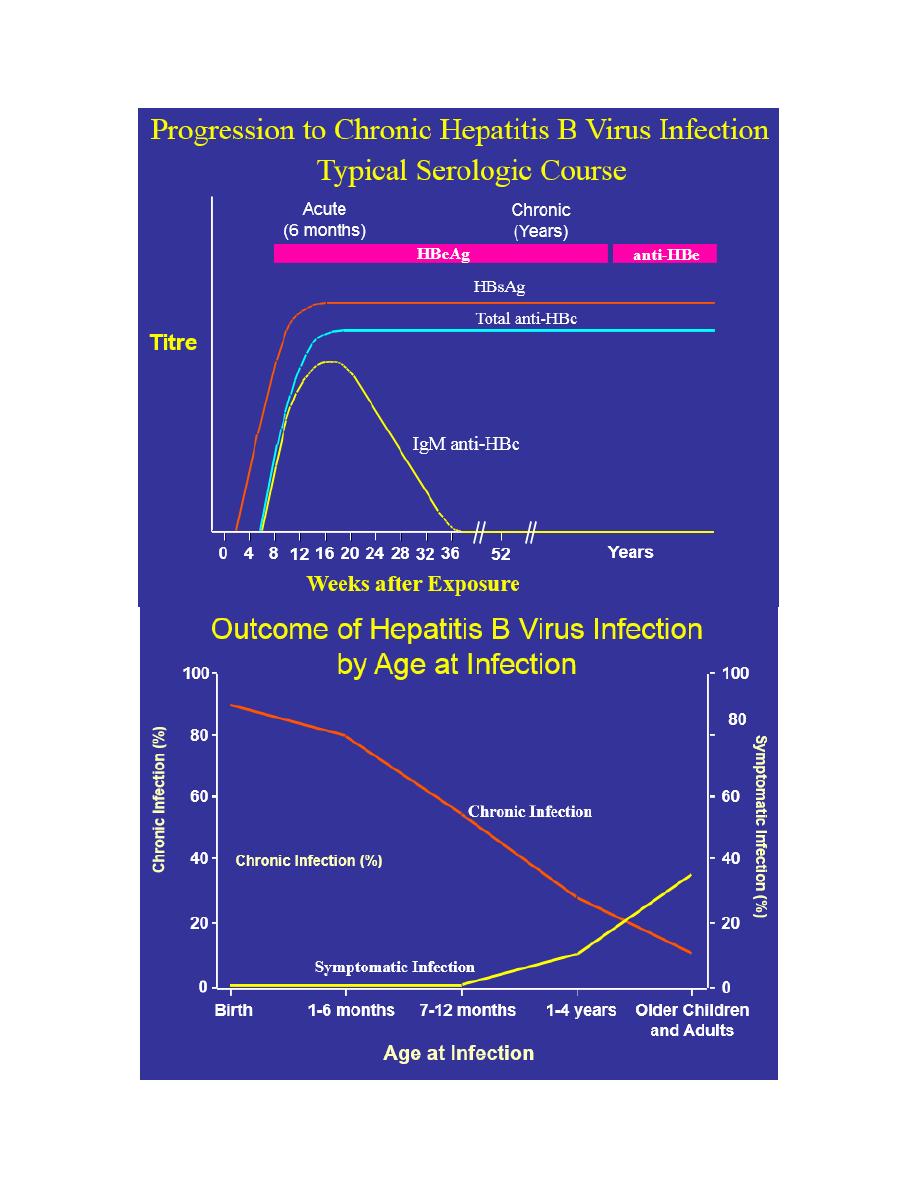
7

8
Concentration of Hepatitis B Virus in Various Body Fluids
High : blood - serum - wound exudates
Moderate : semen - vaginal fluid - saliva
Low/Not Detectable : urine - feces - sweat - tears - breastmilk
Modes of Transmission
Sexual - sex workers and homosexuals are particular at risk.
Parenteral - IVDA, Health Workers are at increased risk.
Perinatal - Mothers who are HBeAg positive are much more likely to
transmit to their offspring than those who are not.
Diagnosis
A battery of serological tests are used for the diagnosis of acute and chronic
hepatitis B infection.
HBsAg - used as a general marker of infection.
HBsAb - used to document recovery and/or immunity to HBV infection.
anti-HBc IgM - marker of acute infection.
anti-HBcIgG - past or chronic infection.
HBeAg - indicates active replication of virus and therefore infectiveness.
Anti-Hbe - virus no longer replicating. However, the patient can still be
positive for HBsAg which is made by integrated HBV.
HBV-DNA - indicates active replication of virus, more accurate than HBeAg
especially in cases of escape mutants. Used mainly for monitoring response to
therapy.
Treatment
Interferon - for HBeAg +ve carriers with chronic active hepatitis. Response
rate is 30 to 40%.
o alpha-interferon 2b (original)
o alpha-interferon 2a (newer, claims to be more efficacious and efficient)
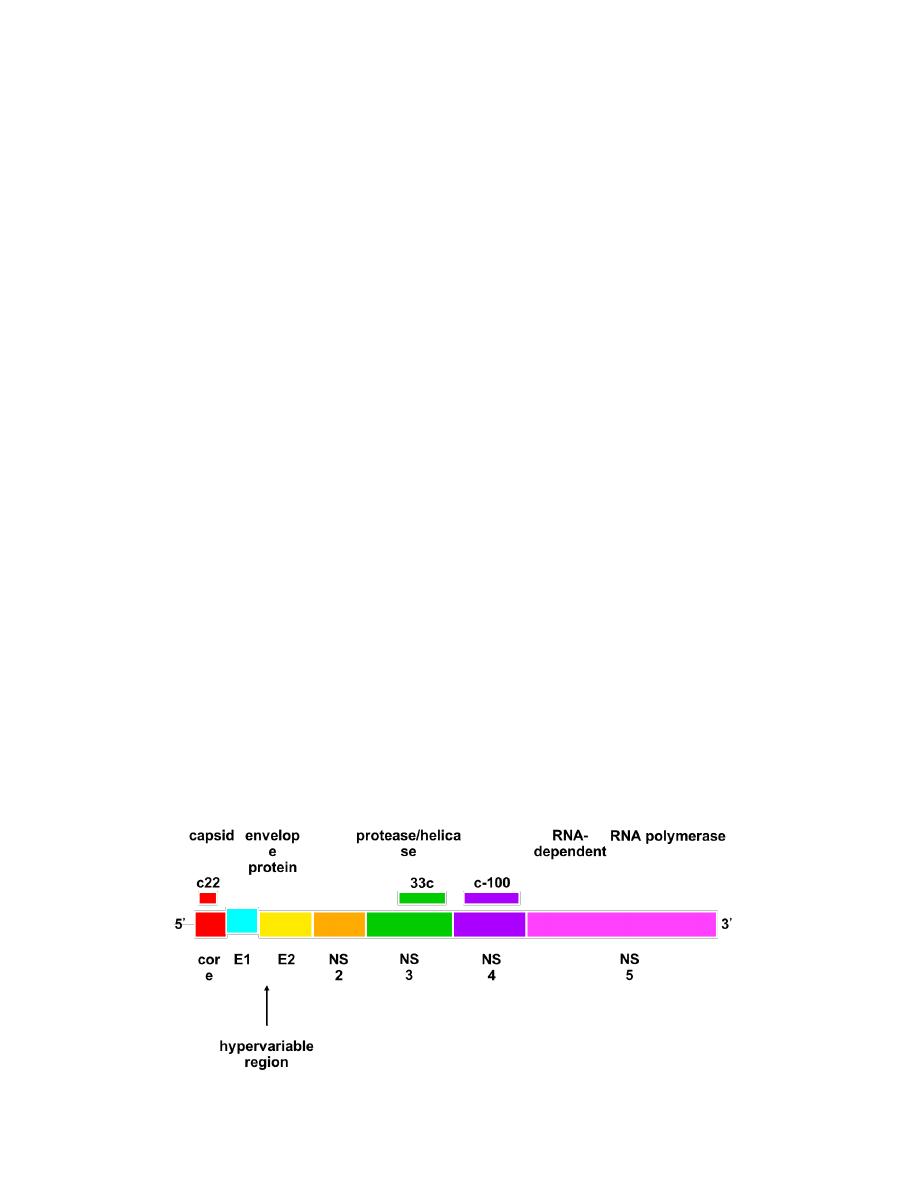
9
Lamivudine - a nucleoside analogue reverse transcriptase inhibitor. Well
tolerated, most patients will respond favorably. However, tendency to relapse
on cessation of treatment. Another problem is the rapid emergence of drug
resistance.
Adefovir – less likely to develop resistance than Lamivudine and may be used
to treat Lamivudine resistance HBV. However more expensive and toxic
Entecavir – most powerful antiviral known, similar to Adefovir
Successful response to treatment will result in the disappearance of HBsAg,
HBV-DNA, and seroconversion to HBeAg.
Prevention
Vaccination - highly effective recombinant vaccines are now available.
Vaccine can be given to those who are at increased risk of HBV infection such
as health care workers. It is also given routinely to neonates as universal
vaccination in many countries.
Hepatitis B Immunoglobulin - HBIG may be used to protect persons who are
exposed to hepatitis B. It is particular efficacious within 48 hours of the
incident. It may also be given to neonates who are at increased risk of
contracting hepatitis B i.e. whose mothers are HBsAg and HBeAg positive.
Other measures - screening of blood donors, blood and body fluid precautions.
Hepatitis C Virus
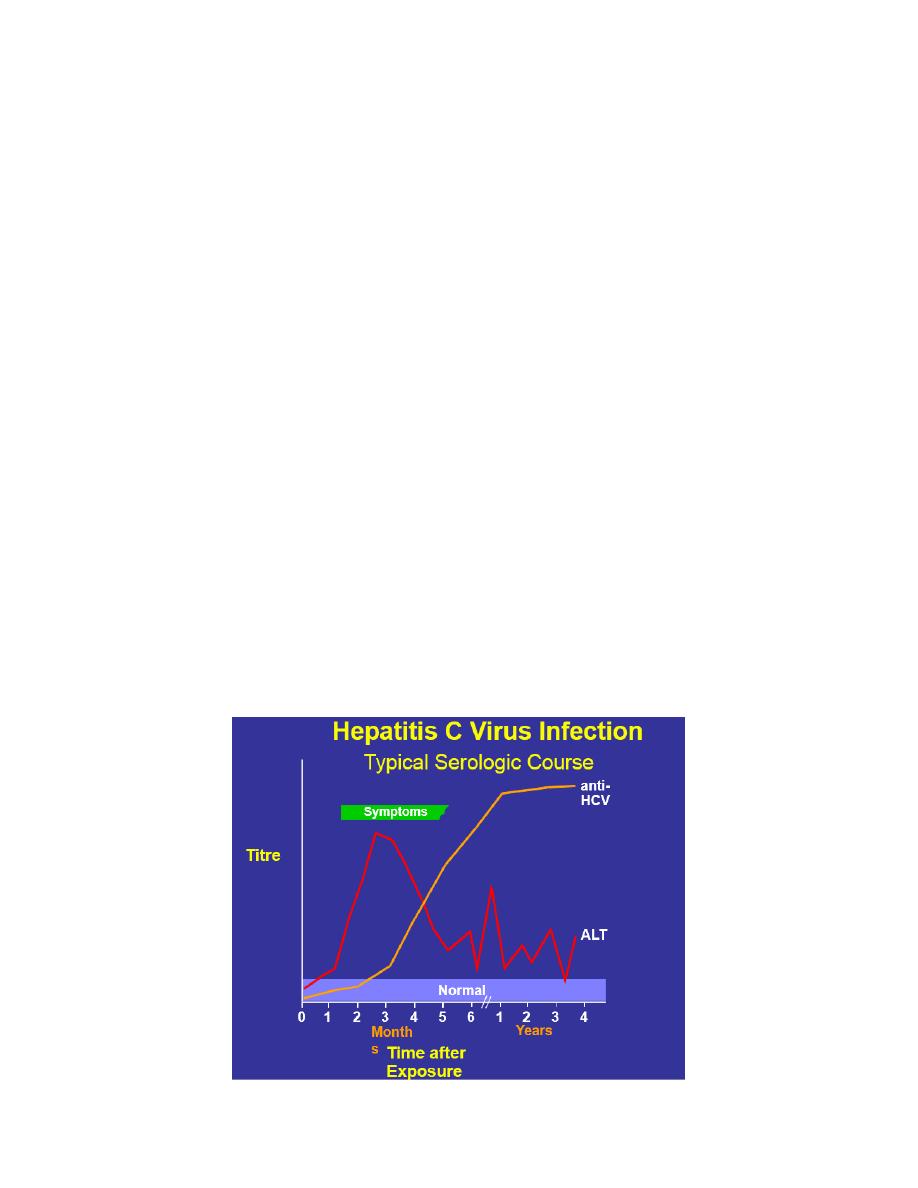
10
Genome resembled that of a flavivirus
positive stranded RNA genome of around 10,000 bases
1 single reading frame, structural genes at the 5' end, the non-structural genes at
the 3' end.
enveloped virus, virion thought to 30-60nm in diameter.
Clinical Features
Incubation period:
Average 6-7 wks
Clinical illness (jaundice):
30-40%
Chronic hepatitis:
70%
Persistent infection:
85-100%
Chronic Hepatitis C Infection
The spectrum of chronic hepatitis C infection is essentially the same as
chronic hepatitis B infection.
All the manifestations of chronic hepatitis B infection may be seen, albeit
with a lower frequency i.e. chronic persistent hepatitis, chronic active
hepatitis, cirrhosis, and hepatocellular carcinoma.

11
Risk Factors Associated with Transmission of HCV
Transfusion or transplant from infected donor
Injecting drug use
Hemodialysis (yrs on treatment)
Accidental injuries with needles/sharps
Sexual/household exposure to anti-HCV-positive contact
Multiple sex partners
Birth to HCV-infected mother
Laboratory Diagnosis
HCV antibody - generally used to diagnose hepatitis C infection. Not useful in
the acute phase as it takes at least 4 weeks after infection before antibody
appears.
HCV-RNA - various techniques are available e.g. PCR and branched DNA.
May be used to diagnose HCV infection in the acute phase. However, its main
use is in monitoring the response to antiviral therapy.
HCV-antigen - an EIA for HCV antigen is available. It is used in the same
capacity as HCV-RNA tests but is much easier to carry out.
Treatment
Interferon - may be considered for patients with chronic active hepatitis. The
response rate is around 50% but 50% of responders will relapse upon
withdrawal of treatment.
Ribavirin - there is less experience with ribavirin than interferon. However,
recent studies suggest that a combination of interferon and ribavirin is more
effective than interferon alone.
Prevention of Hepatitis C
Screening of blood, organ, tissue donors
High-risk behavior modification
Blood and body fluid precautions

12
Hepatitis D (Delta) Virus
The delta agent is a defective virus which shows similarities with the viroids in
plants.
The agent consists of a particle 35 nm in diameter consisting of the delta
antigen surrounded by an outer coat of HBsAg.
The genome of the virus is very small and consists of a single-stranded RNA
Clinical Features
Coinfection
o severe acute disease.
o low risk of chronic infection.
Superinfection
o usually develop chronic HDV infection.
o high risk of severe chronic liver disease.
o may present as an acute hepatitis.
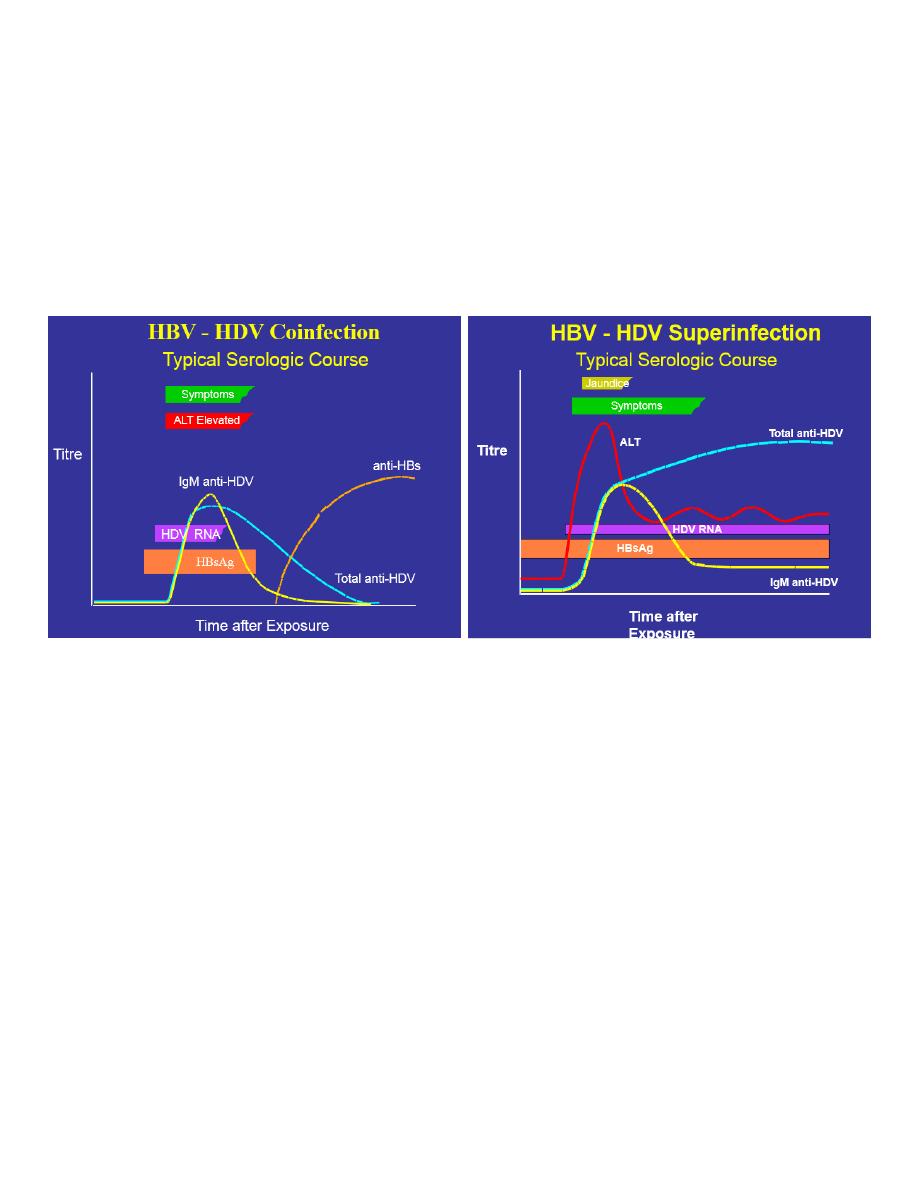
13
Hepatitis D Virus Modes of Transmission
Percutanous exposures
o injecting drug use
Permucosal exposures
o sex contact
Hepatitis D - Prevention
HBV-HDV Coinfection
Pre or postexposure prophylaxis to prevent HBV infection.
HBV-HDV Superinfection
Education to reduce risk behaviors among persons with chronic HBV infection.
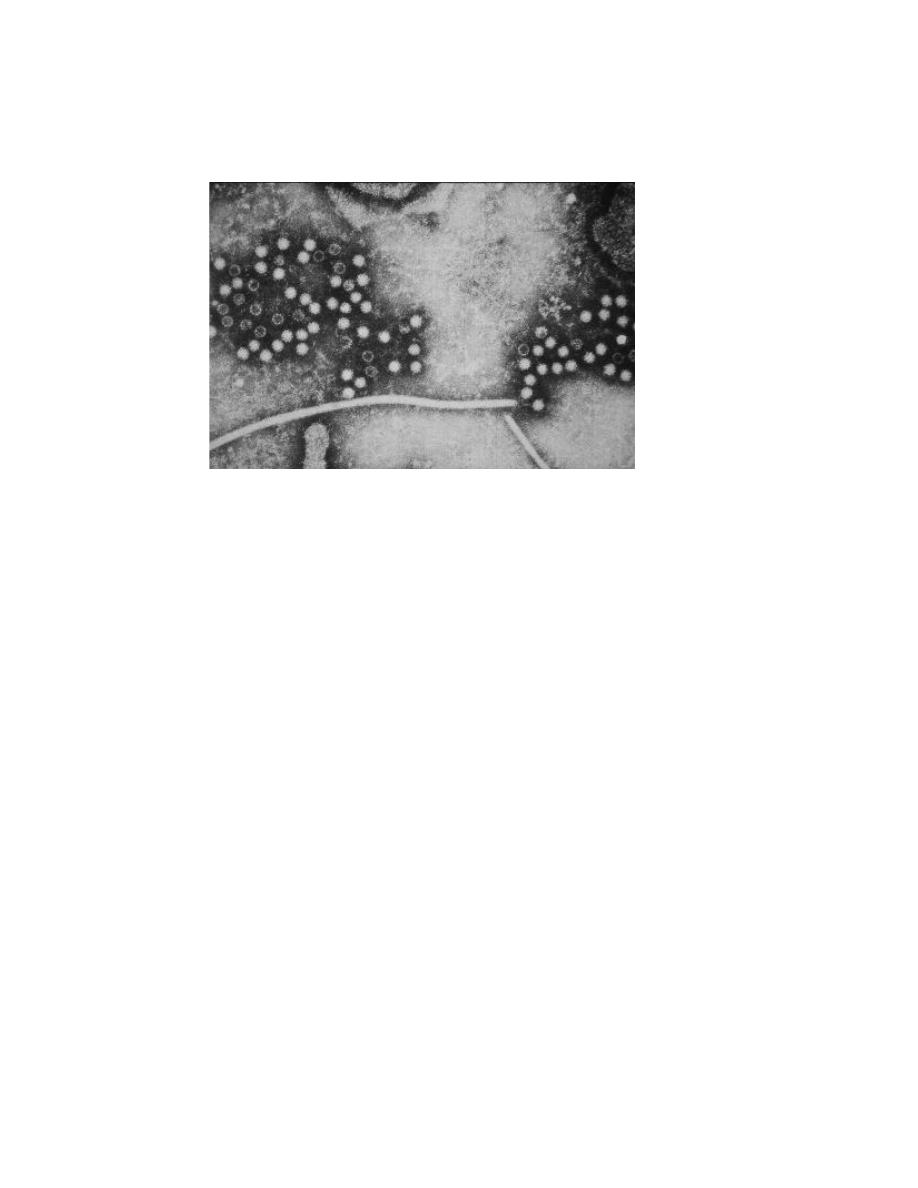
14
Hepatitis E Virus
Calicivirus-like viruses
unenveloped RNA virus, 32-34nm in diameter
+ve stranded RNA genome, 7.6 kb in size.
very labile and sensitive
Can only be cultured recently
Clinical Features
Incubation period:
Average 40 days
Range 15-60 days
Case-fatality rate: Overall, 1%-3%
Illness severity:
Increased with age
Chronic sequelae: None identified
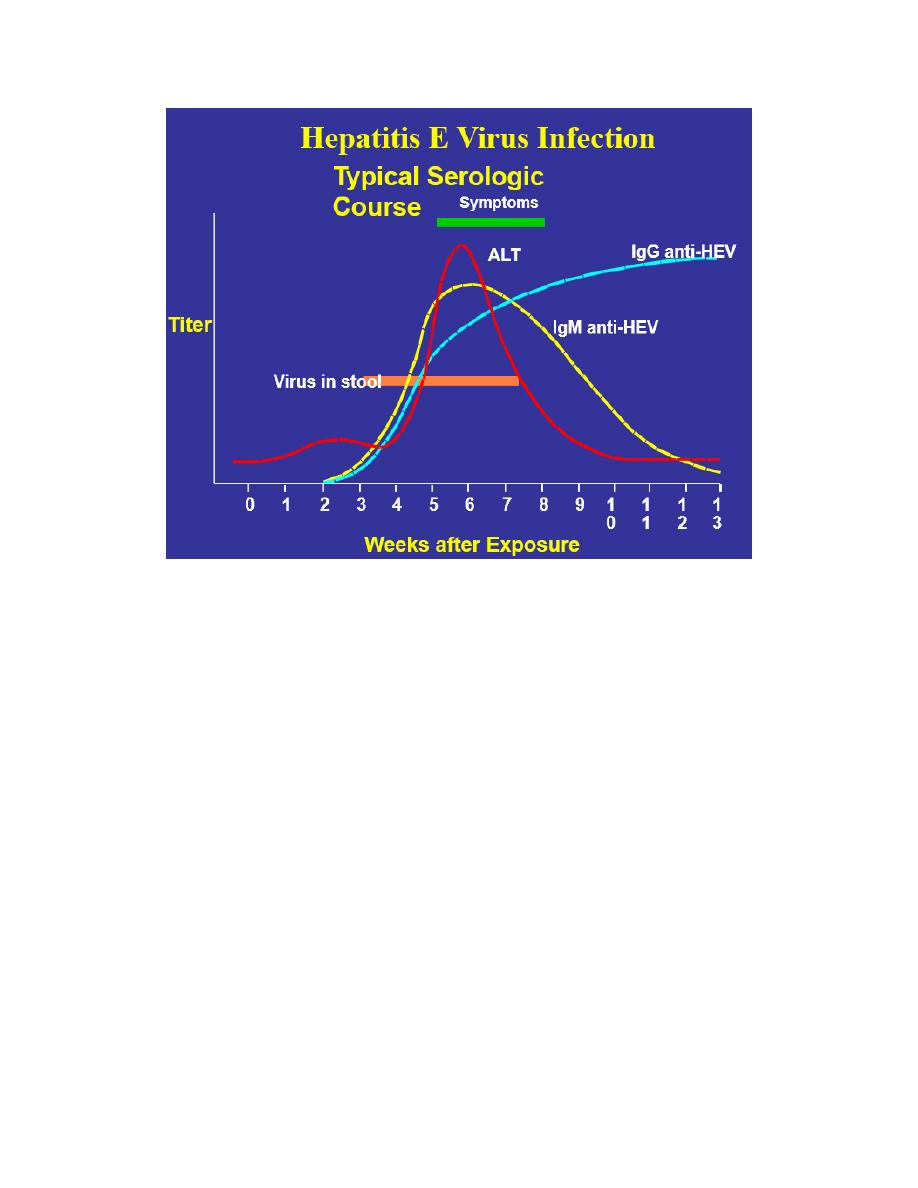
15
Hepatitis E - Epidemiologic Features
Most outbreaks associated with faecally contaminated drinking water.
Several other large epidemics have occurred since in the Indian, China, Africa
and Mexico.
Minimal person-to-person transmission.
Prevention and Control Measures for Travelers to HEV-Endemic Regions
Avoid drinking water (and beverages with ice) of unknown purity, uncooked
shellfish, and uncooked fruit/vegetables not peeled or prepared by traveler..
Vaccine?
